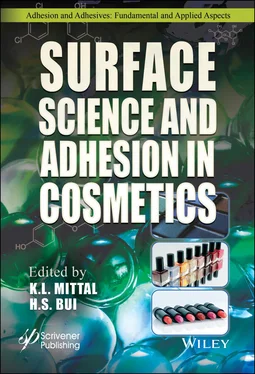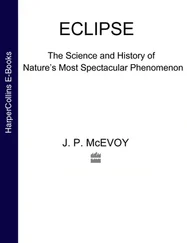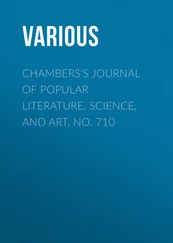1 ...6 7 8 10 11 12 ...33 A second issue raised by formulations incorporating the MQ resin related to the pigment appearance. Although the resin had enhanced lipstick water repellence, the color was found to run once applied to the lips. This is because the MQ resin was soluble in the same phase as the pigments within the formulation, causing the formation of a discontinuous film that allowed the color to run due to detached pigments [3]. To alleviate this issue, the oil within the formulation was replaced with a volatile oil. Not only did this help the color remain in place, but it introduced an additional benefit of enhanced oil resistance [3]. Even with these formulation improvements, consumers still desired a simple, single-step application. Modern long-wear formulations include a complex silicone, which provides the lipstick’s transfer-resistant characteristics, and a volatile oil which contributes towards ease of spreading during application and evaporates to leave behind the benefits of the silicone [3]. From this point on, continuous adjustments to the long-wear lipstick formulation have been made to enhance product performance and perception.
As the long-wear lipstick formulation was being optimized, the consumer need for a single-step application with varying gloss levels arose. The current trend leaned towards glossy, which signified a youthful and healthy appearance. In order to meet this consumer need, the “silicone plus” polymer, a product from 3M known for being a water-resistant film-former with good bioadhesion, was incorporated, which brought shine to the lipstick while also providing long-wear benefits [3]. These tweaks to the long-wear lipstick formulation enabled better performance experienced by the consumer and brought the industry to where products on the market are today. Currently, there are a number of products on the market with claims of long-wear benefits that last between eight and twenty-four hours. Some examples of such products can be seen in Figure 1.2.
Further tweaks to formulations have been made to bring about additional benefits to the consumer. Guerlain Paris, a cosmetics company, introduced a long-lasting lipstick under their KissKiss brand in 1995 that incorporated ceramides and a sun filter [9]. In doing so, the lipstick not only was long-lasting and transfer-resistant, but also introduced additional benefits of moisturizing from the ceramides and protection from the sun. After this point, companies such as Ellen Betrix and Lancôme began incorporating ceramides in their long-lasting lipstick portfolio. In theory, the ceramides help strengthen the skin and decrease the water loss experienced by the skin [9]; therefore, the lip would not be left feeling as dry, like the results of earlier formulation iterations. This was demonstrated through a clinical study evaluating the impact of different concentrations of ceramides on lipstick wear. After a thirty minute application time, it was concluded that wear improved as the amount of ceramides in the formulation increased [9].

Figure 1.2 Commercially available examples of long-wear lipsticks.
Historically, the development of lipstick formulations has been conducted without a comprehensive understanding of the biophysical properties of the lips. Compared to the knowledge base for skin, there is limited existing literature on the properties of lips. With the development of new and sophisticated analytical tools, gaining a strong understanding of lip surface and biophysical properties can provide key information towards the future innovation of lipstick and lip care products. Towards that goal, this book chapter has two main objectives: to provide an overview of biophysical properties of the lips and to provide a review of conventional lipstick evaluation methods.
1.2 Overview of Lip Anatomy & Lip Surface Properties
1.2.1 Lip Anatomy and Biophysical Properties
The lips are two pliable and mobile muscular folds which surround the oral cavity, and act functionally to support food intake, articulation, facial expression as well as being an important tactile organ [10–14]. The upper lip (Labium superioris) extends from the base of the nose to the nasolabial folds, while the lower lip (Labium inferioris) lies between the mouth and labiomental groove ( Figure 1.3a) [15, 16]. The interface between the outer versus inner surface of the lip is defined as the vermilion border, where, histologically, the transition between the keratinized vs. the non-keratinized epithelium can be visualized. The two paramedian elevations of the vermilion of the upper lip are defined as the Cupid’s Bow [15, 16]. The two raised vertical columns form the philtrum, which is a midline depression located between the paramedian elevations of the vermilion and the columella. The lips have three distinct surfaces: outer surface, edge, and inner surface. The outer surface of the lip is composed of stratified squamous keratinized epithelium ( Figure 1.3b) while the inner surface of the lip is composed of stratified squamous non-keratinized epithelium. The inner surfaces are lubricated with saliva to facilitate chewing and swallowing, while the keratinized outer surface of the lip serves to protect against friction, drying, and potential microbial invasion.

Figure 1.3 (a) The anatomical landmarks of the lips [15] (b) Histological sections of human skin (left) and lip (right) as stained by H&E [66].
The tissue structure of lip skin is illustrated in Figure 1.3b. The tissue of lip skin is made of epidermis, subcutaneous tissue, orbicularis oris muscle, and mucosa [17]. Compared to the human skin ( Figure 1.3b, left), the keratinized epithelium of the lips is much thinner (3-5 cell layers averaging to only a few micrometers in thickness in the lip versus 16-20 cell layers averaging to 10-20 micrometers for the skin). In terms of the extracellular matrix content, both the skin and the lips contain similar levels of epithelial glycogen, elastin and collagen [17]. The lips, however, are richer in blood vessel networks, contain many sensory nerve endings from the mandibular and maxillary nerves and show absence of hair, sebaceous glands, and sweat glands [10]. These histological features of the lips provide the unique tissue properties that can be perceived. The thin keratinized epithelium is part of the reason why the lips are more susceptible to drying and chapping, as the reduced barrier layer makes the lips more susceptible to water loss. The rich vascular network, combined with the thinness of epidermis and the lack of pigments, is what makes the lips appear red. The lips receive blood supply from external carotid arteries [10, 18, 19]. The facial artery branches into an inferior and a superior labial artery, which courses beneath the orbicularis oris muscle. The superficial artery reach the skin of the upper lips and form a vascular plexus [18]. The lower lip receives blood supply from three labial arteries: the inferior labial artery, horizontal and vertical labiomental arteries [18]. Under extremely cold temperatures, the blood vessels in the lips will undergo vasoconstriction as well as having reduced level of oxygen, thus turning the lips purple. Similarly, the sensory nerve endings in the lips can make the lips sensitive to touch and temperature. The upper lip receives sensory innervations from the infraorbital nerve, while the lower lips receive its sensory innervation from the mandibular nerves. The buccal nerve, a sensory branch of the mandibular nerve, provides innervation to the entire cheek mucosa and skin around the mouth [20]. In the context of makeup, the sensitive lip surface is what allows the consumers to perceive tightness and drying after the application of lipsticks.
Читать дальше














